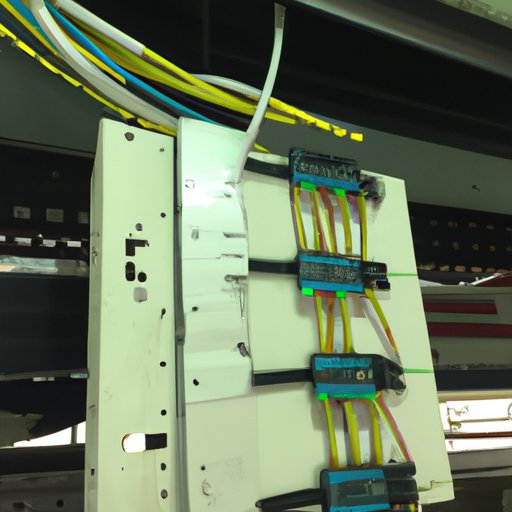Introduction
A relay is an electrical switch that operates automatically when activated by an electric current or signal. It basically acts like a remote control, allowing you to control the flow of electricity in a circuit without having to physically touch it. Relays are used in a wide variety of applications, from controlling lights and appliances to operating large machines and industrial processes.

Explaining the Basics of Relay Operation
Relays are a key component of many automated and control systems. They act as an intermediary between two circuits, allowing one circuit to control another circuit without direct contact between them. This prevents the need for manual operation of the equipment, which can be dangerous if done incorrectly. To understand how relays work, it’s important to first understand the different types of relays and their uses.
The most common type of relay is the electromechanical relay, which consists of a coil of wire wrapped around an iron core. When an electric current is applied to the coil, it creates a magnetic field that causes the iron core to move, which in turn activates a switch that connects the two circuits. Other types of relays include solid state relays, which use semiconductor technology instead of coils of wire; and reed relays, which use a thin strip of metal called a reed switch to open and close the contacts. Each type of relay has its own advantages and disadvantages, so it’s important to choose the right type for the application.
The typical relay consists of three main components: the coil, the armature, and the contacts. The coil is the part that creates the magnetic field when energized, and it is usually made up of insulated copper wire. The armature is the part that moves when the coil is energized, and it is usually made from a piece of iron or steel. The contacts are the parts that actually make and break the electrical connection between the two circuits, and they are typically made from silver or gold.
Demonstrating How to Test and Troubleshoot a Relay System
Testing and troubleshooting a relay system requires an understanding of the different components and how they interact. The first step is to test the coil to make sure it is working properly. This can be done using an ohmmeter or multimeter. If the coil is not working, then the circuit will not be able to complete the connection. If the coil is functioning correctly, then the next step is to test the armature and contacts. The armature should move freely when the coil is energized, and the contacts should make and break the electrical connection when the armature is moved.
Once the relay is tested and verified to be working properly, the next step is to troubleshoot any problems that may arise. Common issues with relays include faulty wiring, incorrect voltage, and poor connections. If the wiring is incorrect, then the relay may not be able to complete the connection. If the voltage is too high or low, then the relay may not be able to activate. Poor connections can cause the relay to short circuit, which can damage the relay and other components connected to it.
It is also important to check the environment in which the relay is located. If the relay is exposed to extreme temperatures, moisture, or vibration, then this could affect the performance of the relay. It is also important to check for any loose connections or corrosion, as this can cause the relay to malfunction.
Conclusion
Relays are an essential component of many automated and control systems, and understanding how they work is essential for successful operation. This article provided an overview of the different types of relays and their uses, and explained the basics of relay operation, testing, and troubleshooting. By following the steps outlined here, you can ensure that your relay system is running properly and efficiently.
In summary, relays are a vital part of automation and control systems. Understanding how relays work and how to test and troubleshoot them is essential for maintaining a reliable and efficient system. With the information provided in this article, you can ensure that your relay system is functioning properly and safely.
(Note: Is this article not meeting your expectations? Do you have knowledge or insights to share? Unlock new opportunities and expand your reach by joining our authors team. Click Registration to join us and share your expertise with our readers.)
